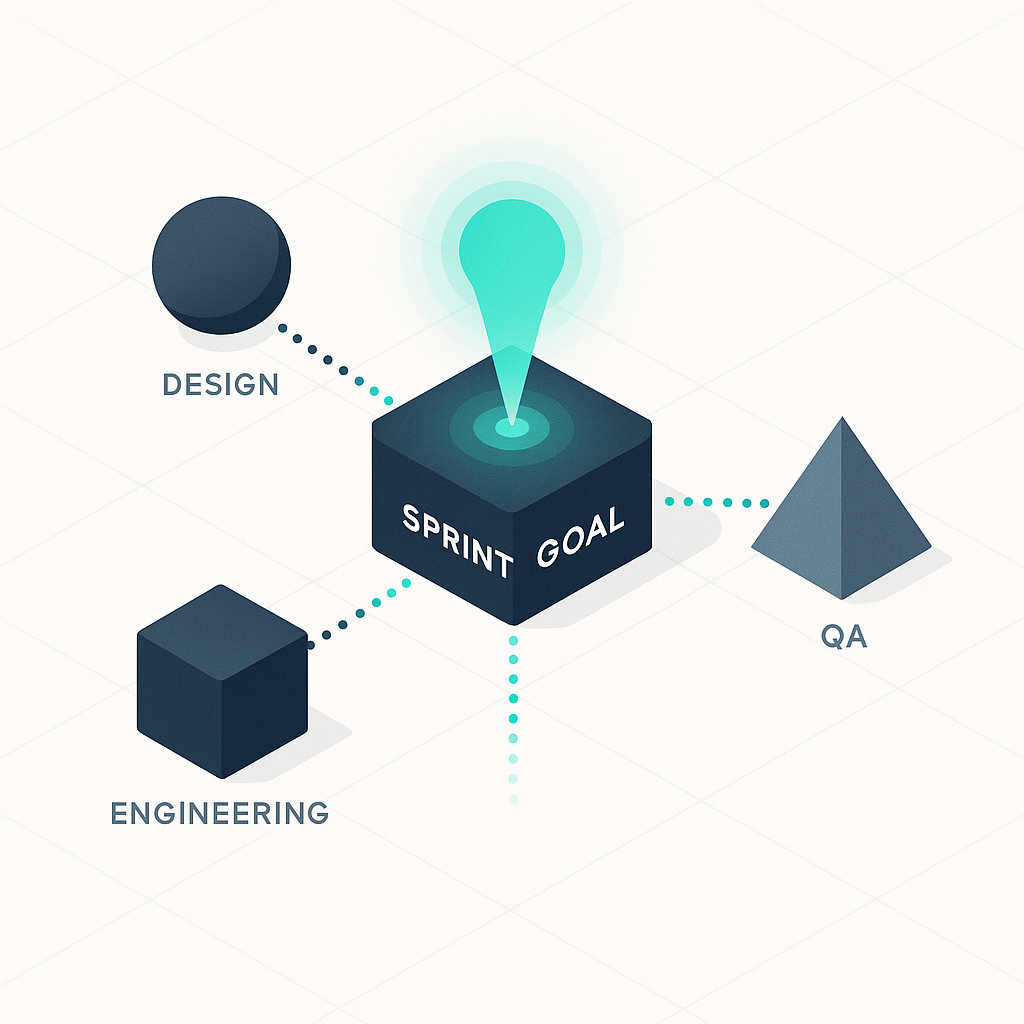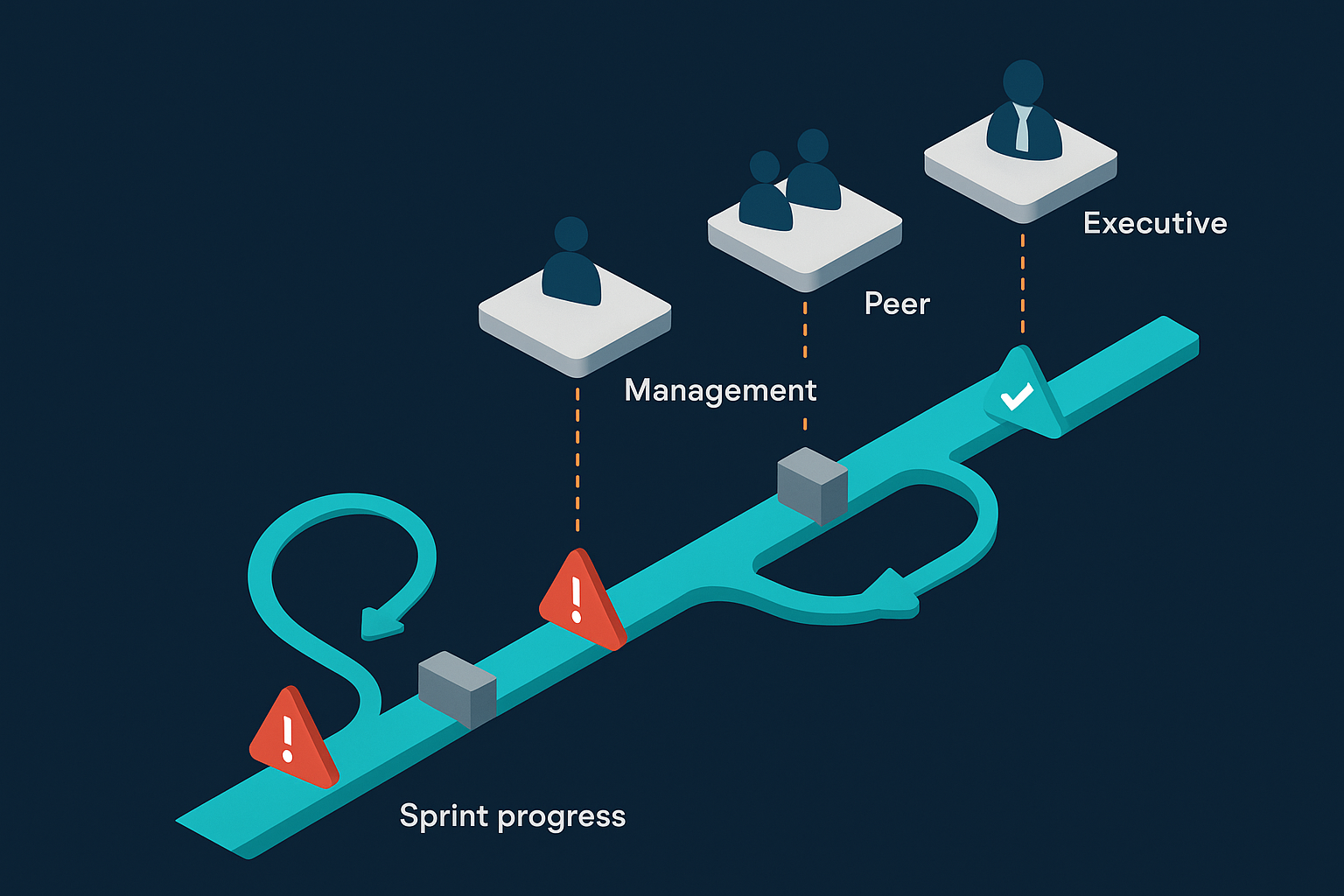Building on your foundation in priority planning and roadmapping, you now turn to the critical challenge of actually delivering what you've promised. Agile delivery mastery transcends the mechanical execution of sprints or Scrum ceremonies—it represents your ability to orchestrate complex human and technical systems that consistently ship value under pressure. The difference between mediocre and exceptional Product Managers often lies not in their strategic vision but in their capacity to navigate the daily complexities of execution.
Throughout this lesson, you'll develop three essential capabilities that transform you from a backlog administrator into a true delivery leader. First, you'll master the art of coordinating diverse teams toward shared objectives, creating harmony from the natural tension between engineers who think in systems, designers who think in experiences, and stakeholders who think in business outcomes. Next, you'll learn to decompose overwhelming work into manageable pieces that deliver incremental value while maintaining team momentum. Finally, you'll discover how to clear the path when obstacles threaten your progress, knowing when to intervene directly and when to escalate decisively.
The harsh reality of product management is that even the most brilliant roadmap means nothing if your team can't execute. You've likely experienced the frustration of watching carefully planned sprints derail due to unexpected dependencies, scope creep, or technical surprises. What makes agile delivery particularly challenging is that you're not merely managing tasks—you're harmonizing the efforts of professionals with different perspectives, vocabularies, and success metrics. Your role demands creating coherence from this natural tension, transforming potentially conflicting viewpoints into complementary forces that drive toward delivery.
The morning stand-up represents far more than a status update ritual—it's your daily opportunity to align diverse minds toward a singular purpose. When you step into that room, whether virtual or physical, you're conducting an orchestra where each section has its own sheet music, tempo preferences, and understanding of what "success" sounds like. Your engineering lead might define sprint success as "zero technical debt added," while your designer sees it as "delightful user experience shipped," and your QA lead measures it by "comprehensive test coverage achieved." Your mastery lies in helping each person see how their individual definition connects to the shared sprint goal.

Creating shared understanding begins with articulating sprint objectives in language that resonates across disciplines. Rather than stating "complete user authentication feature," you might frame it as "enable 1,000 users to securely access their accounts with less than 2-second load time and zero security vulnerabilities." This framing gives your engineer a performance target, your designer a user experience goal, and your QA lead a clear testing criterion. When conflicts inevitably arise, you can return to this shared objective as your north star, asking "which option better serves our goal of secure, fast authentication for 1,000 users?"
The art of coordination reveals itself most clearly when you're managing dependencies across teams. Perhaps your squad needs an API from the platform team, design assets from the centralized design system, or infrastructure changes from DevOps. Each external dependency represents a potential failure point that could derail your entire sprint. Rather than hoping these dependencies resolve themselves, you must actively manage them through what I call dependency diplomacy. This means building relationships before you need them, understanding other teams' priorities and constraints, and finding creative ways to align your needs with their goals.
The ability to decompose large, ambiguous work into concrete, valuable increments separates competent Product Managers from exceptional ones. When faced with an epic like "Implement complete invoicing system," your instinct might be to break it down by technical components—database schema, API endpoints, UI screens. However, this approach often leads to sprints where lots of code gets written but no actual value reaches users. Instead, you must think in terms of thin vertical slices that cut through the entire stack to deliver real user value, even if that value is initially minimal.
Consider how you might decompose that invoicing epic differently. Instead of creating stories like "Build invoice database" followed by "Create invoice API" followed by "Design invoice UI," you would identify the smallest possible invoice workflow that provides value: "As a user, I can create a simple invoice with customer name and amount, then mark it as paid." This slice might not include every field, fancy formatting, or automated reminders, but it delivers actual value that users can experience and provide feedback on. Each subsequent slice adds capability—"Add line items to invoices," "Email invoices to customers," "Track payment status"—while maintaining the principle that every increment is shippable and valuable.

The conversation about story sizing often becomes a battlefield of optimism versus pessimism. Your engineer estimates 13 story points for a feature, claiming uncertainty about edge cases and integration complexity, while your stakeholder hears this and immediately pushes back, insisting it should be 5 points based on a similar feature at their previous company. Rather than adjudicating this dispute based on opinion, you can employ . Pull up three previously completed stories of varying complexity and ask: This shifts the conversation from abstract debate to concrete comparison.
Your ability to rapidly identify and eliminate blockers determines whether your team maintains velocity or grinds to a halt. Impediments come in many forms—technical dependencies, resource constraints, stakeholder conflicts, or external vendor delays—but they all share one characteristic: they prevent your team from making progress. Your role isn't to solve every problem yourself but to ensure problems get solved quickly through appropriate action, whether that's direct intervention, escalation, or creative workarounds.
The first skill in impediment removal is pattern recognition. When your QA lead mentions "we're waiting for test data from the platform team," you must immediately recognize this as a potential sprint-killer, not a minor inconvenience. Experience teaches you that "waiting for" often becomes "still waiting for" and eventually "sprint failed because we were waiting for." The moment you hear about a dependency or blocker, your mental alarm should trigger a series of rapid questions: How critical is this? What's the impact if it's not resolved? Who can resolve it? What's our Plan B?

Effective escalation requires understanding the escalation path and choosing the right level for each situation. Not every problem needs to go to the VP of Engineering, but waiting too long to escalate can be equally damaging. You must develop judgment about when to handle issues within the team, when to engage peer managers, and when to invoke executive support. A corrupted test database might be resolved by a quick Slack message to the DevOps lead, while a vendor API that's been down for three days might require your VP to call their VP. The key is matching the escalation level to both the impact and the required authority to resolve it.
Your escalation communication must be precise and action-oriented. Instead of sending a panic-filled message saying "The platform team is blocking us and the sprint is at risk!" you craft a clear escalation: "The payment webhook API (ticket #4521) has been unavailable for 48 hours, blocking 3 stories worth 13 points. We need either the API restored by 2 PM today or approval to implement our backup plan using polling (adds 2 days of work). Can you help unblock this with the platform team?" This message clearly states the problem, impact, timeline, and requested action, making it easy for the recipient to help.
